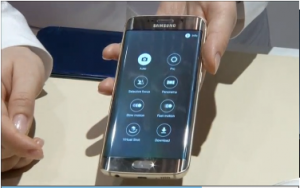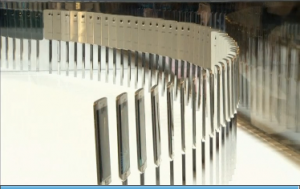
(Reuters) — Samsung Electronics Co Ltd unveiled its latest Galaxy S smartphones on Sunday (March 1) featuring a slim body made from aircraft-grade metal, in a bid to reclaim the throne of undisputed global smartphone leader from Apple Inc.
Designed from scratch in an operation dubbed “Project Zero”, the Galaxy S6 and its curved-edges variant are critical for Samsung’s plans to reverse plunging smartphone revenues that led to its first annual earnings fall in three years in 2014.
By some estimates, Apple surpassed Samsung as the world’s biggest smartphone maker late last year, selling a record 74.5 million iPhones in the December quarter on the back of the success of its big-screen iPhone 6 and 6 Plus.
Samsung’s previous flagship Galaxy S5 was outsold in its second full month of global sales by Apple’s older iPhone 5S, according to researcher Counterpoint.
The South Korean giant begins its fight-back on April 10 when the revamped Galaxy phones, unveiled at the Mobile World Congress in Barcelona on Sunday, hit the market in one of the most important product launches in the company’s history.
“Our goal was simple: The most beautiful smartphones in Samsung’s history. And the most advanced smartphones in the world. That is what comes next,” J.K. Shin, Samsung’s president and chief executive told a packed hall in Barcelona’s convention centre.
“This is Galaxy S6 and Galaxy S6 Edge. These are the best and fastest smartphones in the world. With capabilities nobody else can match. But that is not all: to use a technical and engineering tone: It is cool,” he added.
Samsung is yet to disclose pricing or where the phones will appear first but said on Sunday that the phone will go on sale in 20 countries.

Stand-out features include casing made from light-weight metal used in airplanes, a step up from the plastic that disappointed many critics of the S5, and Corning Inc’s Gorilla Glass on both front and back.
The Galaxy S6 upgrades the previous version’s camera and screen, and strips out many of Samsung’s unpopular in-house software apps that infuriated users by gobbling memory. It and the Galaxy S6 Edge will also be powered by Samsung’s new 64-bit, 14-nanometer Exynos processors, analysts said.







